As the holiday season approaches, it's that magical time of year when twinkling lights and festive decorations fill our homes and communities. However, to ensure everyone enjoys the season's cheer, it's essential to establish some guidelines for holiday decorations. These rules will help maintain a harmonious environment while allowing everyone to express their holiday spirit. So, let's dive in and explore the best practices for decorating this festive season!

Clarity and Specificity
Holiday decoration rules are essential for maintaining a harmonious atmosphere in shared spaces such as apartment complexes, office buildings, or community centers. Clear guidelines specify allowable decoration types, such as string lights, wreaths, and ornaments, often prohibiting items that pose safety hazards, like open flames or overloaded electrical outlets. Designated areas, such as balconies or tree lawns, outline where decorations can be placed, ensuring visibility and accessibility for all residents. Specifics regarding installation timelines, typically starting the first week of December until January 7, help prevent premature or delayed displays. Additional notes on storage and removal of decorations promote community responsibility, ensuring that all festive decor supports a joyful environment while maintaining safety standards.
Inclusive Language
Holiday decorations can foster a sense of community spirit and unity among residents in shared living environments, such as apartments or condominiums. Guidelines must prioritize inclusivity to reflect diverse beliefs and traditions. For instance, opportunities for decorations celebrating various holidays like Diwali, Hanukkah, Kwanzaa, and Christmas can be encouraged, ensuring representation of cultural significance. Noteworthy safety regulations should be outlined, including prohibitions against open flames and restrictions on using specific materials to prevent fire hazards. Additionally, rules regarding shared spaces, such as hallways and communal areas, must emphasize keeping walkways clear for accessibility, accommodating all residents regardless of mobility. Designated timeframes for displaying decorations can enhance community engagement while respecting personal preferences.
Compliance with Safety Regulations
Holiday decorations in residential and commercial properties must adhere to safety regulations set forth by local fire codes. Electrical decorations (such as string lights and illuminated figures) should be UL-listed (Underwriters Laboratories) ensuring they meet safety standards. Materials used for decorations (such as tinsel and ribbons) must be flame-retardant to minimize fire hazards. The placement of decorations should avoid blocking exits or fire equipment, maintaining clear access paths. Trees, both natural and artificial, should be securely anchored and displayed away from heat sources to prevent ignition. Regular visual inspections of electrical decorations for frayed wires or damaged plugs are essential to ensure continued compliance with safety requirements.
Encouragement of Creativity
Holiday decoration rules encourage creativity and self-expression. Residents are invited to use materials such as LED lights (which are energy-efficient) and biodegradable ornaments to create festive displays that reflect personal styles. Communal spaces like the lobby at 123 Main Street can be adorned with handmade wreaths or unique centerpieces crafted from natural elements. Additionally, the annual holiday decoration contest, scheduled for December 15, offers prizes for the most innovative setups, encouraging residents to participate and showcase their artistic talents. Collaboration and community spirit can shine through group projects, fostering relationships while enhancing the holiday ambiance throughout the neighborhood.
Respect for Diversity and Beliefs
Holiday decoration rules promote an inclusive atmosphere, respecting diverse beliefs and traditions. Organizations or communities often establish guidelines to ensure that decorations, such as Christmas trees, Hanukkah menorahs, and Diwali lights, are displayed in ways that honor various cultural practices. Clear protocols may include avoiding religious symbols that may not reflect the entire community's values and ensuring that secular decorations, such as wreaths or winter themes, are utilized to create a festive yet neutral environment. Designated common areas, like lobbies (often central gathering points), can play host to these decorations while encouraging participation from all individuals, fostering inclusivity. It is crucial to communicate these expectations annually, creating harmony and understanding among participants who celebrate different holidays, thereby promoting mutual respect and appreciation.
Letter Template For Holiday Decoration Rules Samples
Letter template of holiday decoration procedures for residential associations.
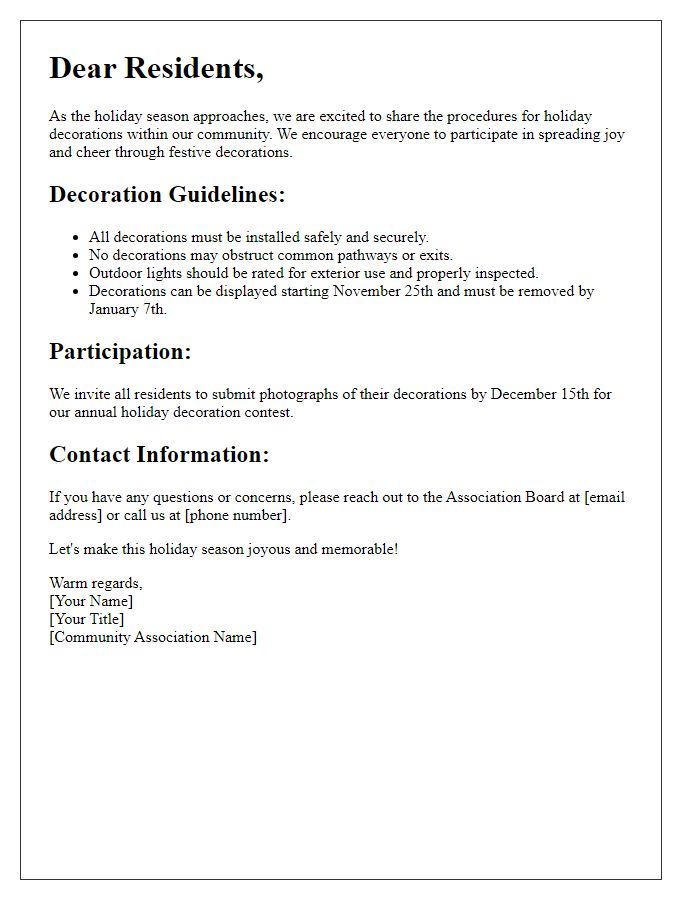
Letter template of holiday decoration regulations for apartment complexes.
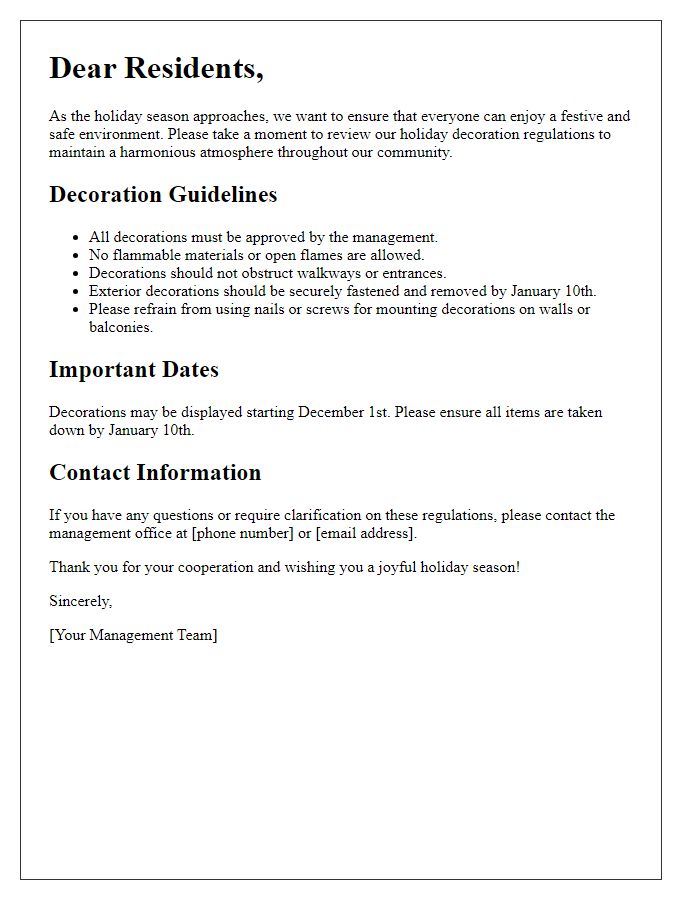

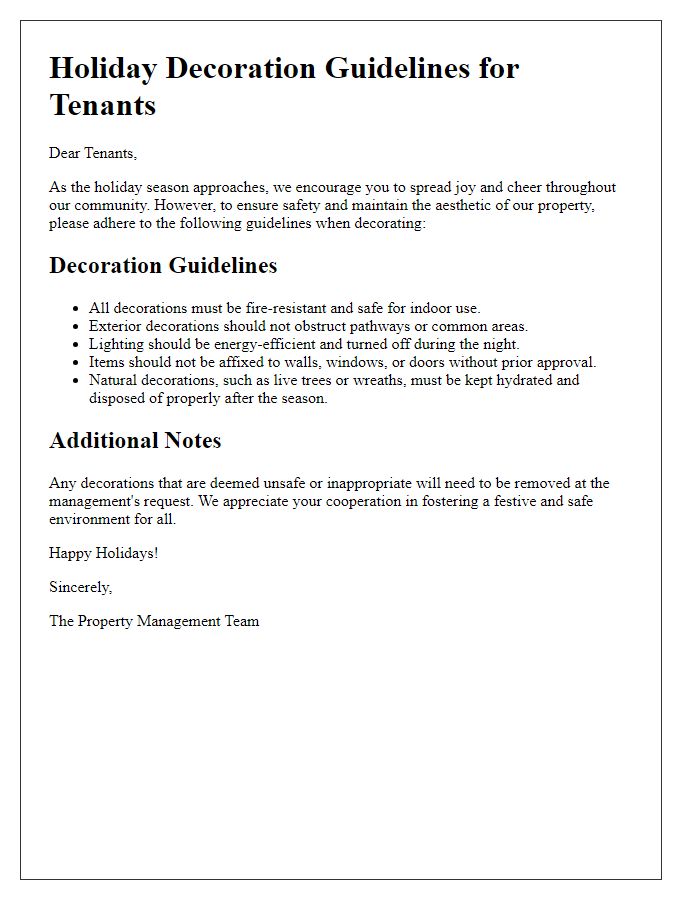
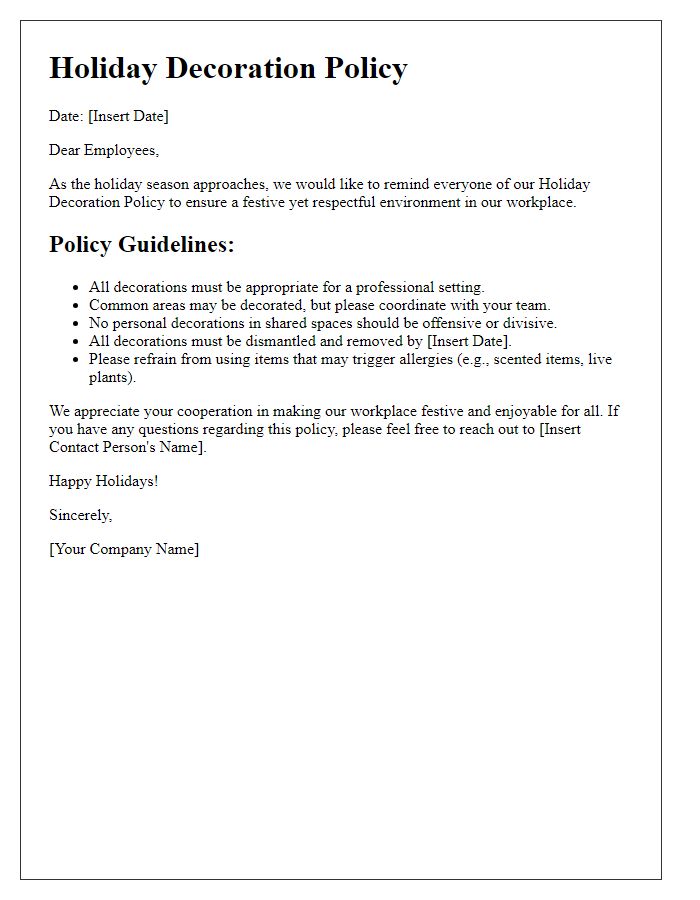
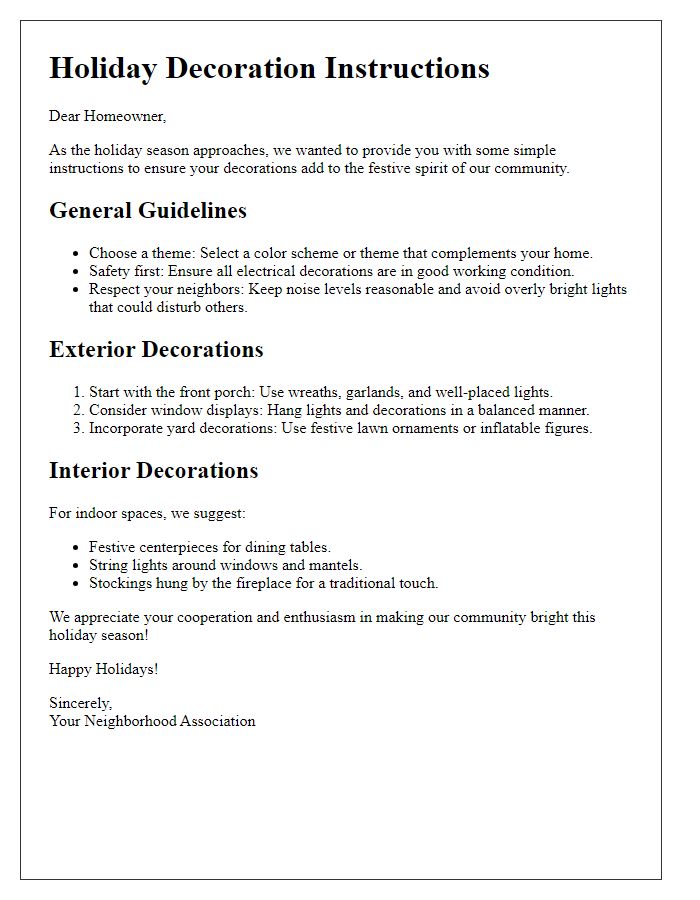
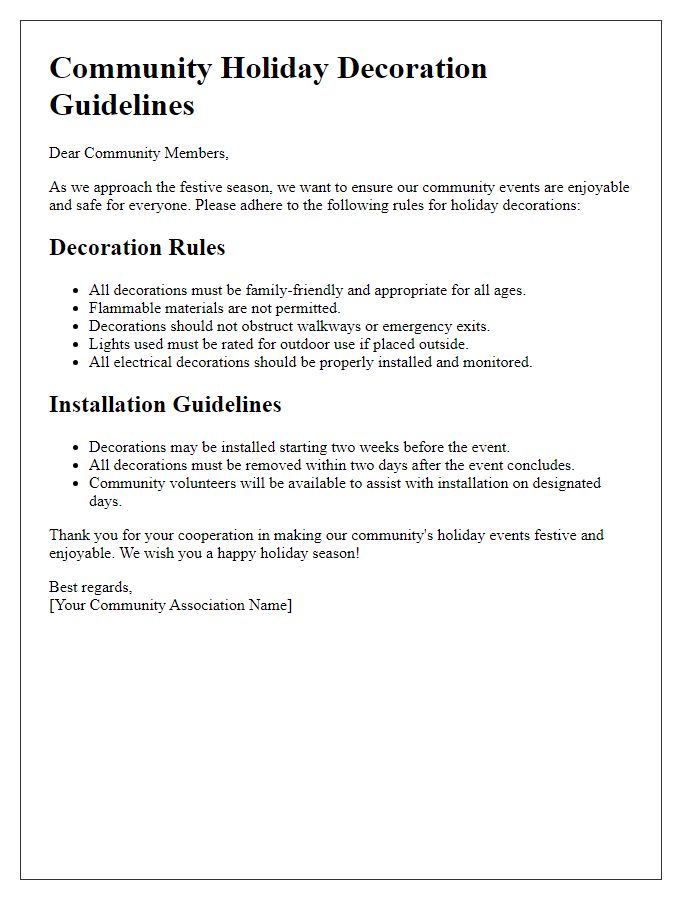
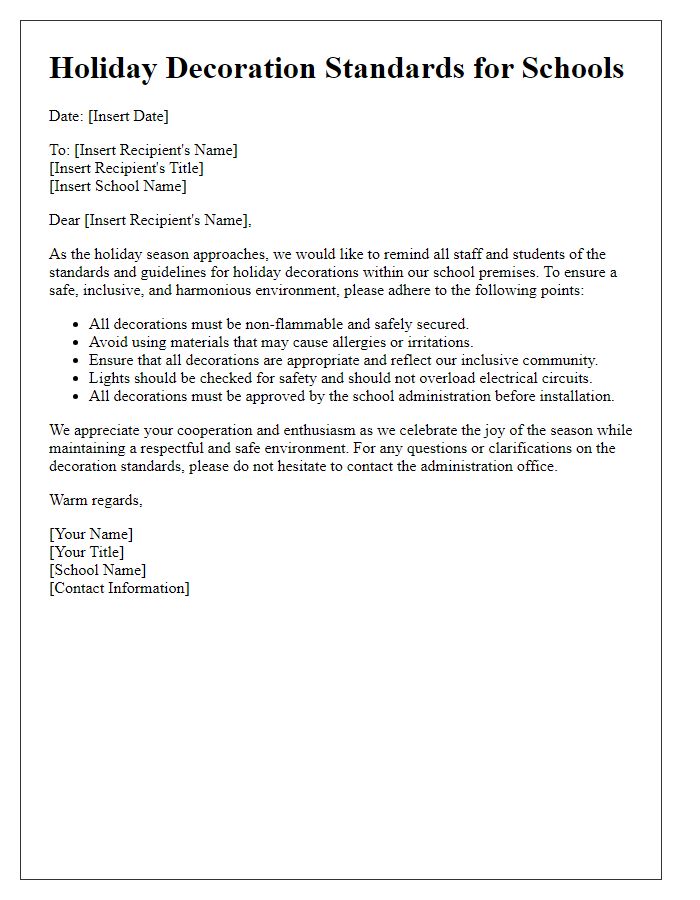
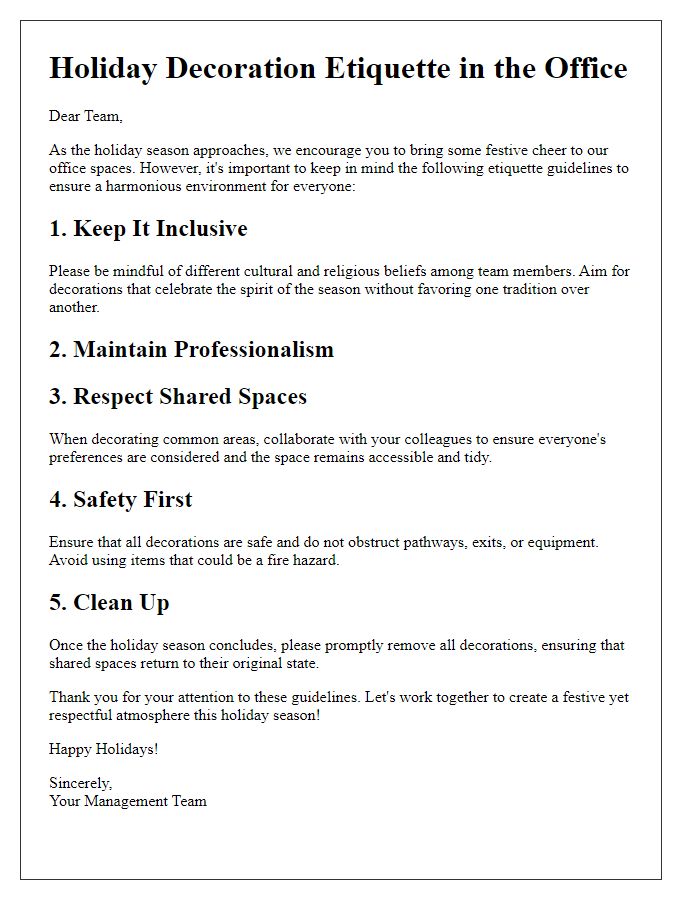
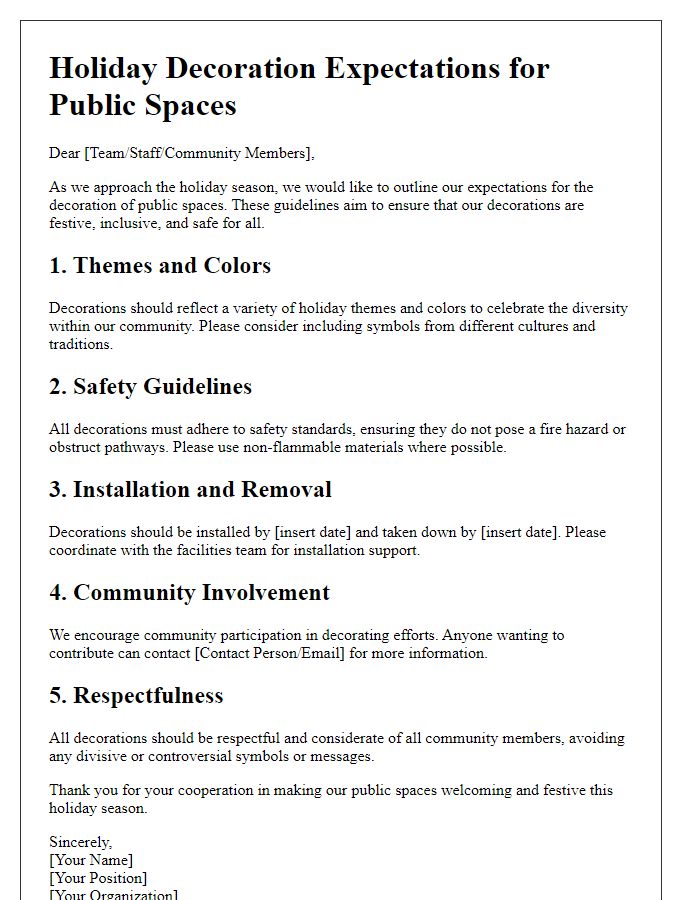
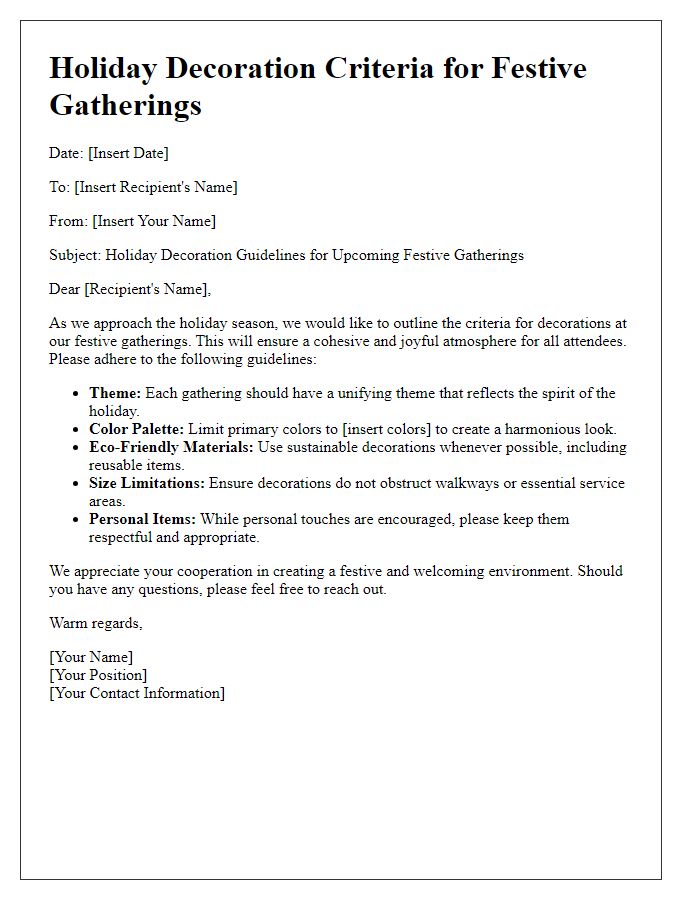


Comments